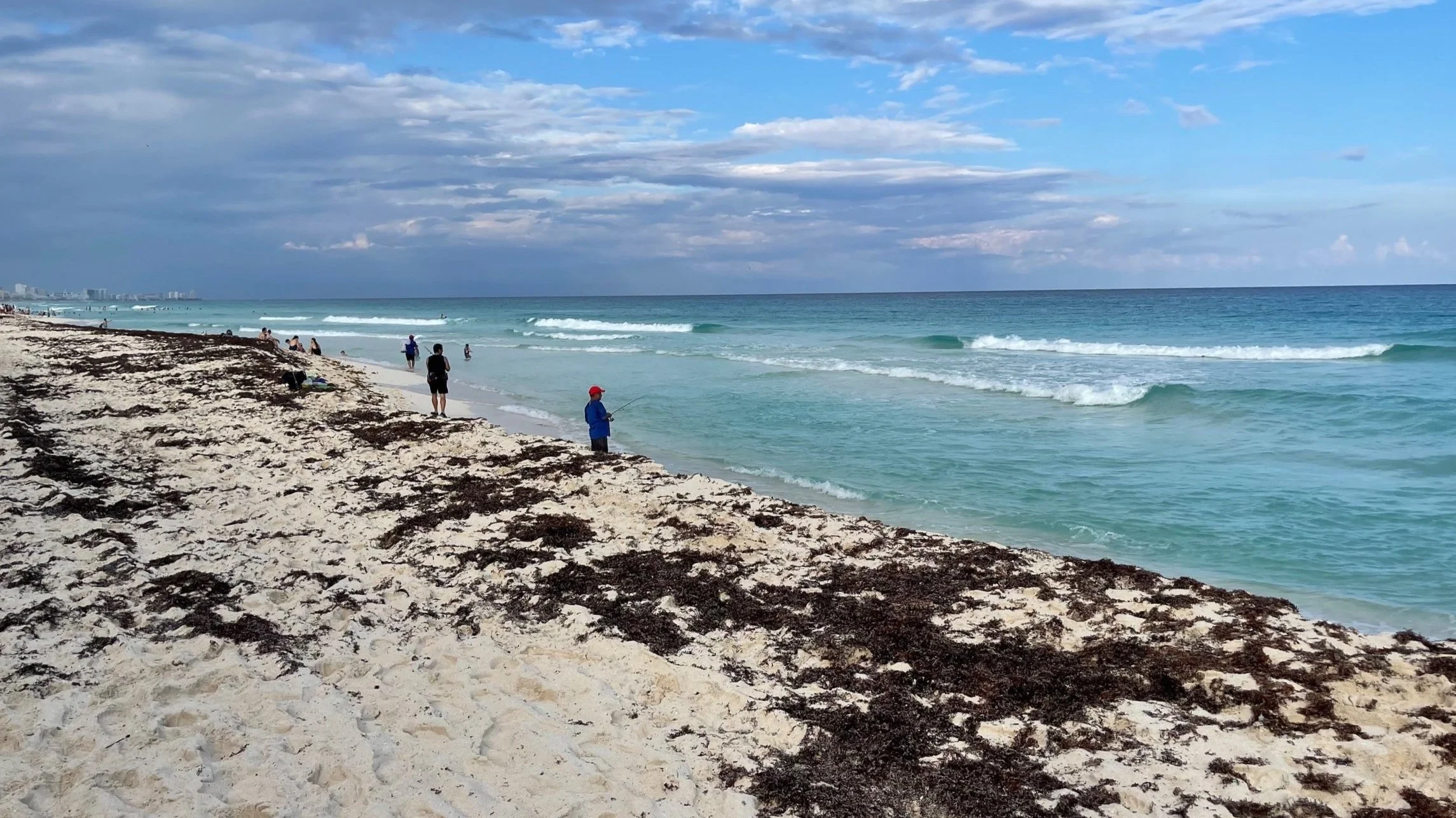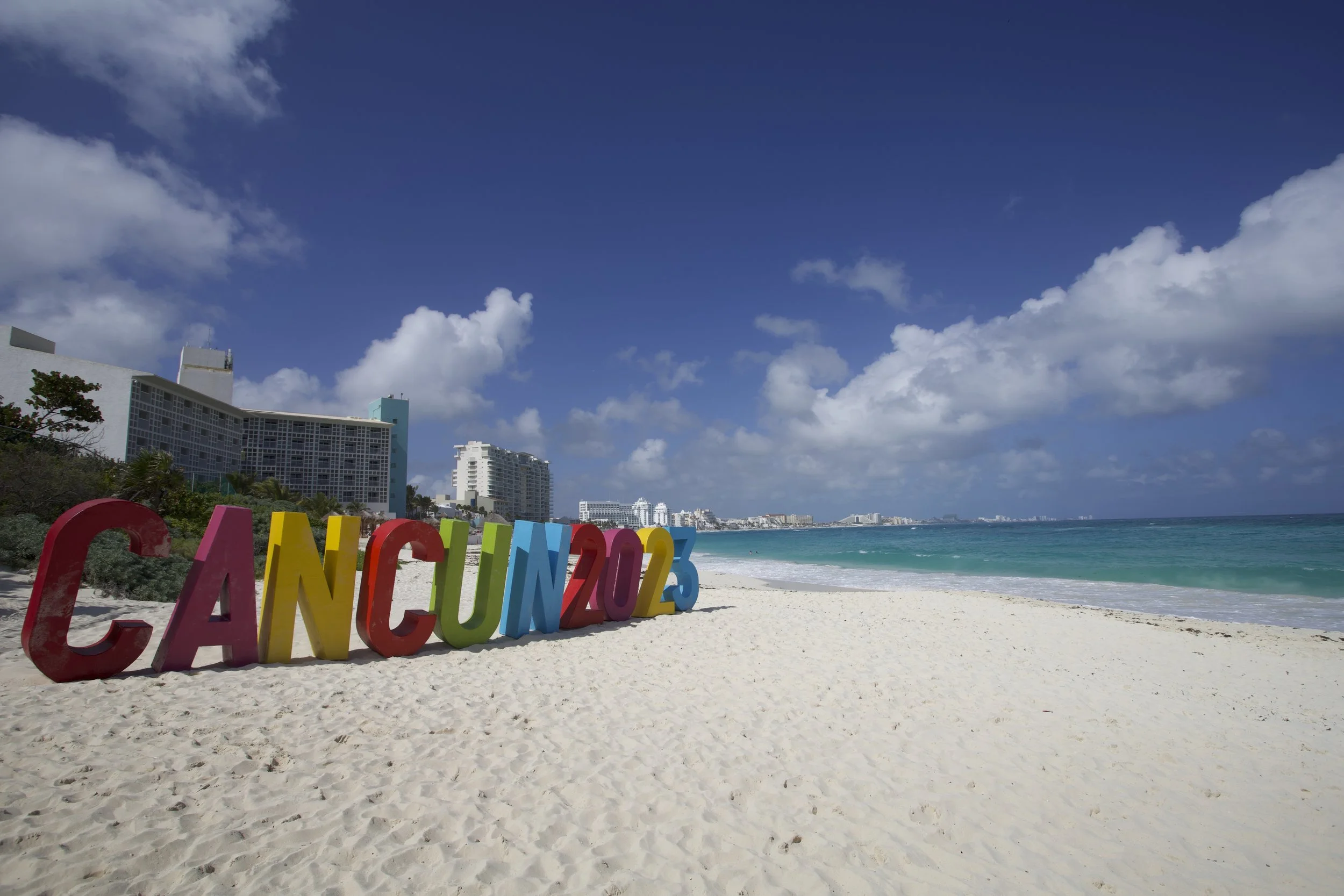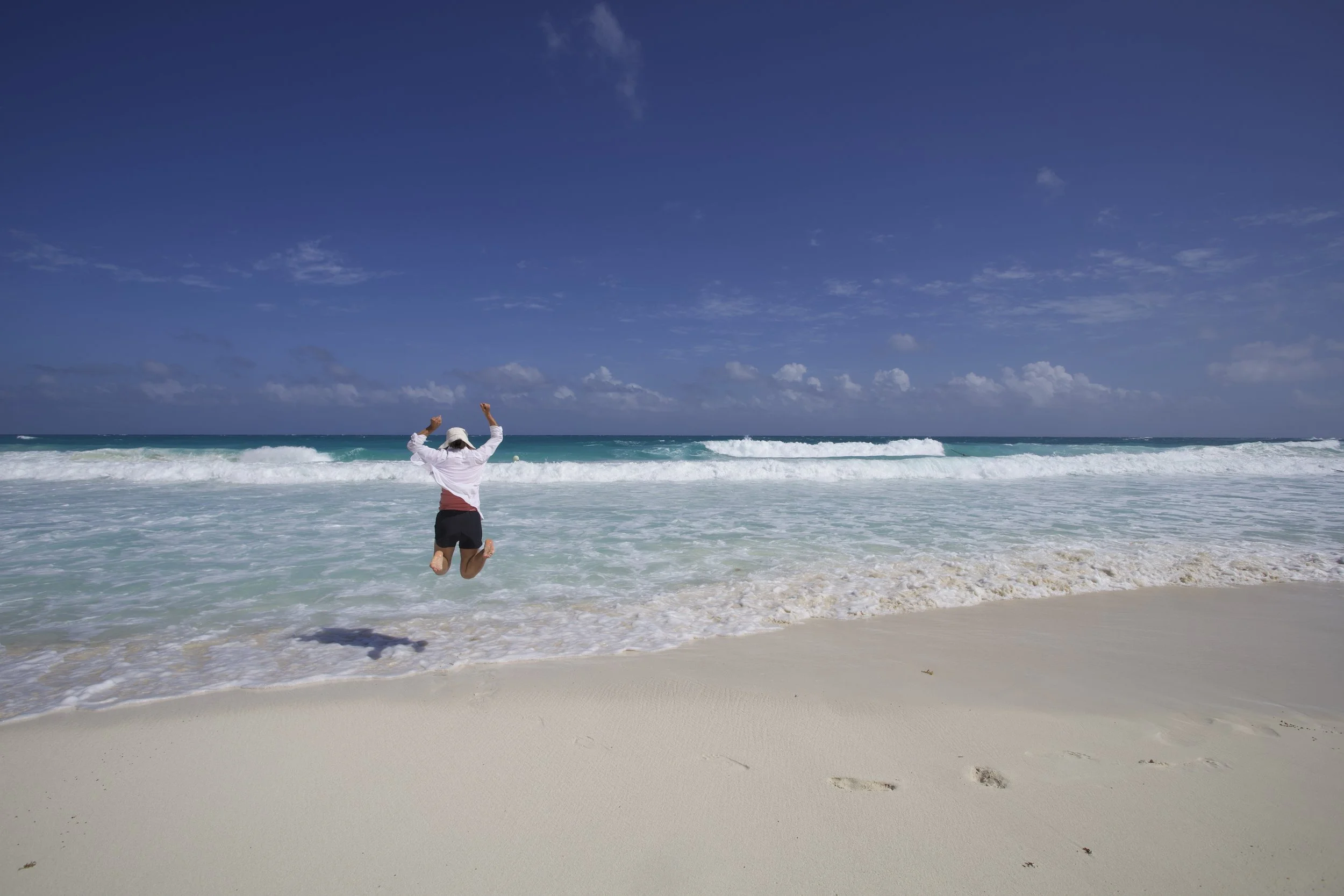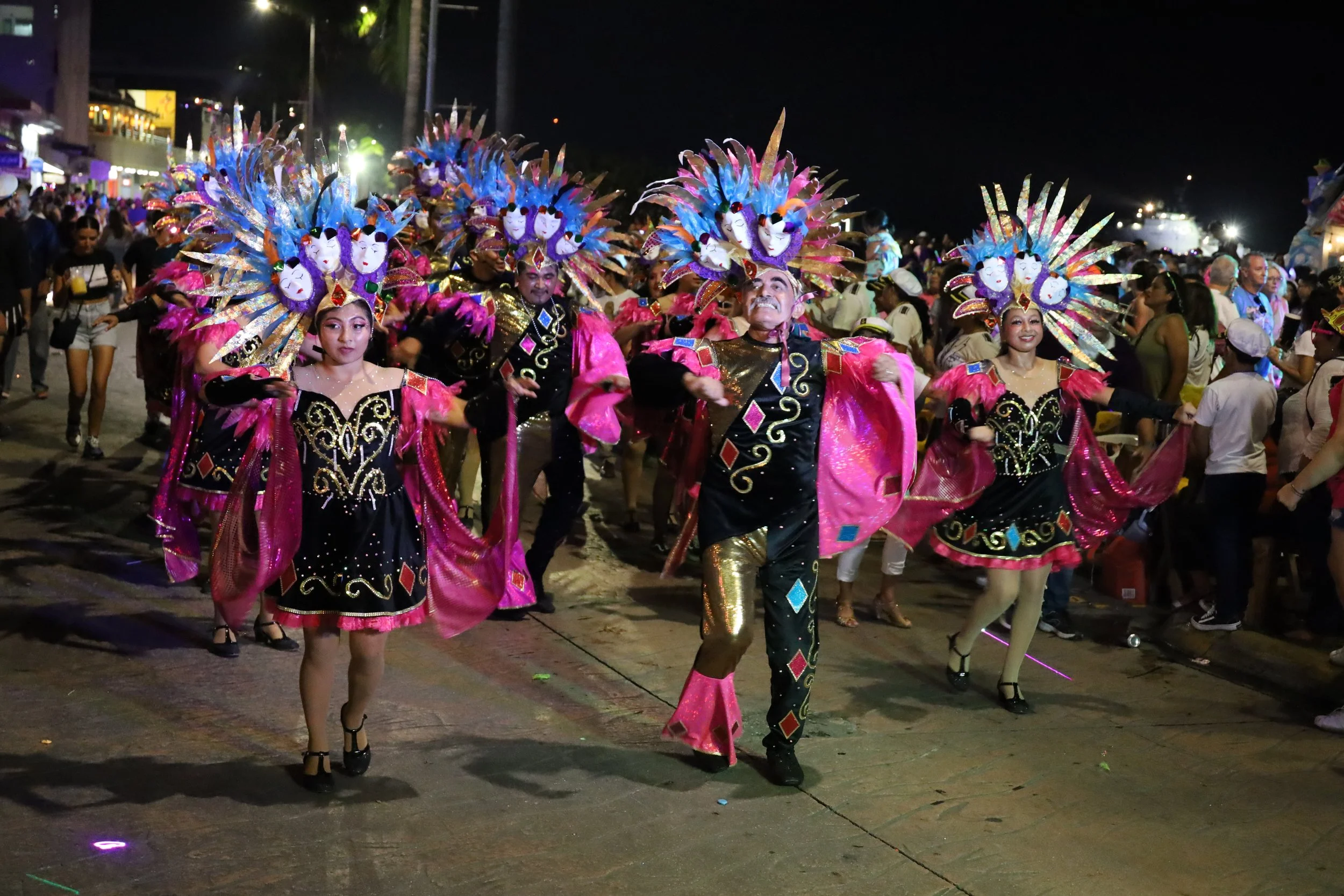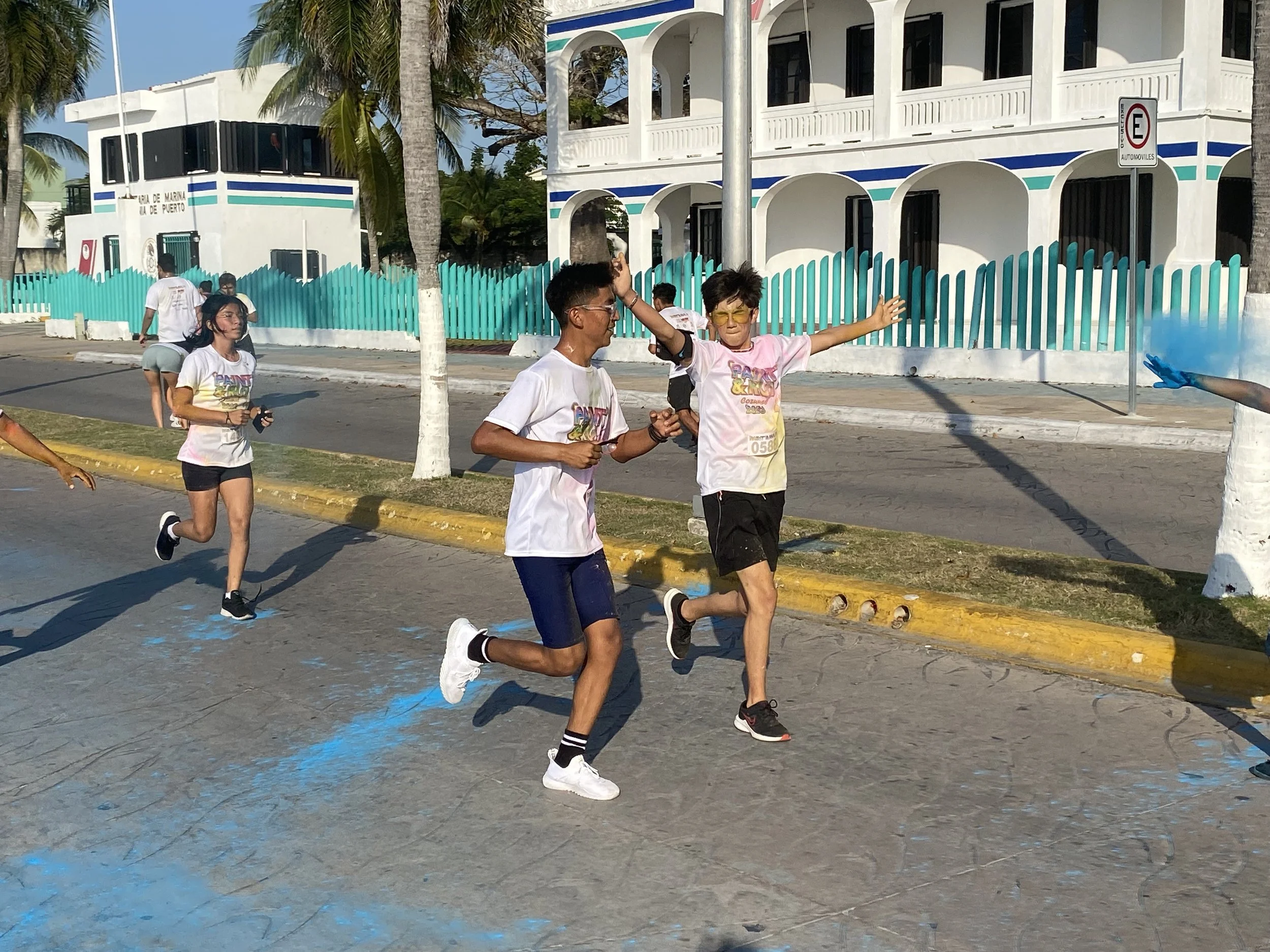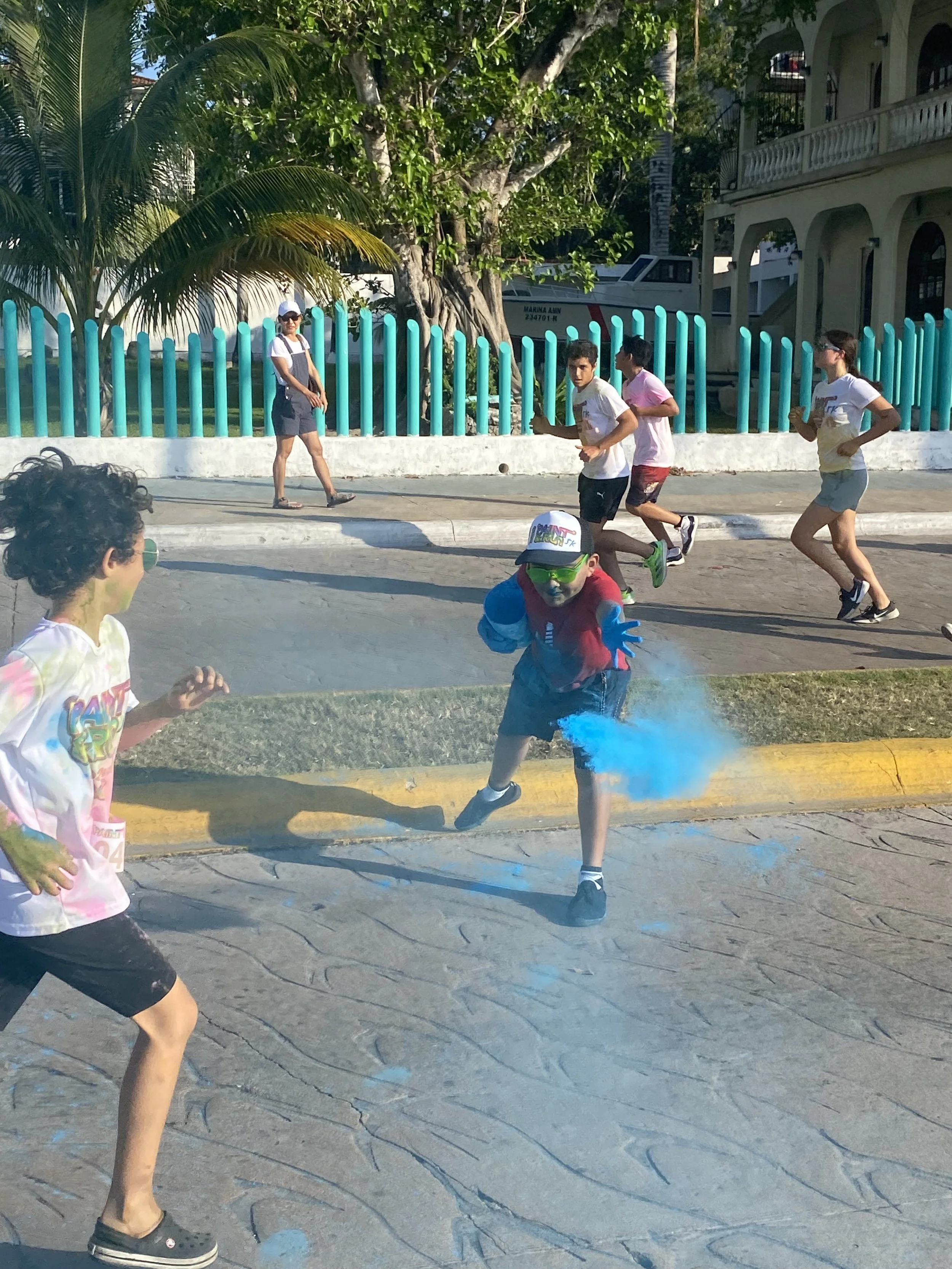Cancun and Cozumel, MX
So we drove our little van from Death Valley National Park in California all the way to Cancun, Mexico… JK!
Although N. never doubted the wisdom of driving to Mexico with the same nonchalance he had while driving around the United States, I never felt as comfortable: I didn’t know whether campgrounds and RV services would be available, we were ignorant of local customs, and neither of us knew how to distinguish safety from danger in a foreign country. I won the argument with the help of the United States Department of State, which issued a travel advisory to the state of Quintana Roo — where Cancun and Cozumel were — and cautioned US citizens to “Exercise increased caution due to crime and kidnapping.” So there. (I should put in an application for an emoji sticking a tongue out with childish impudence). Now, the wisdom of going despite references to “kidnapping” was a different question…
We couldn’t think of where to go in the US. February is a cold month, and national parks such as the Grand Canyon or Yosemite were still covered in snow. And our van and N. were both allergic to snow — the undercarriage of the van was not insulated, so all its tanks and hoses would freeze; N.’s claims were more precarious. The only time he owned up to his age was when weather was involved — “I’m old, and cold weather is not good for an old man!” So we left our little van in Los Angeles, hopped onto a plane, and found ourselves in the sun and humidity of Cancun, Mexico. The old man was happy.
More than 25 years ago, we once spent a week in Cancun. Our kids were young and they did the usual young-kid-things at the beach, spending hours on the sand, pretending to be artists or architects and breaking their design sessions by riding the waves with their boogie boards. All they needed from N. and me were nagging calls to eat lunch and slather on sunscreen. Cancun was also the location of one of our family’s most infamous vacation lores (kiddos, surely you remember the toxic gas incident).
All this is to say that we had fond memories of Cancun and had been looking forward to this trip. One cause of hesitation had been our more recent experiences in the Caribbean with sargassum seaweed on beaches: messy, smelly, and absolutely relentless. Just in case, N. had read online reviews that stated confidently that there was no sargassum on the beaches in Cancun; apparently, seaweed season began in May. (Odd things have seasons nowadays: pumpkin spice coffees, wildfires, seaweed.)
As if we needed yet another example of how many things online were not true, after our evening flight into Cancun, we woke up in the morning, looked outside the hotel room’s windows and saw that the beach was now only a fraction of what it had been years ago and that it was covered in sargassum.
Mother Nature did not seem happy.
***
In order to avoid both Montezuma’s Revenge and having to buy bottles and bottles of water, I brought a water purifier with us. For now, the only faucet available was the one in our bathroom. Factoid: the biggest challenge of drinking purified water from a bathroom faucet is the mental hurdle of knowing that one is drinking purified water from a bathroom faucet. That was Water Challenge #1.
Water Challenge #2 was the fact that, even after being purified, the water had an unappetizing smell and the texture of watered-down hand sanitizer. To be fair, the purifier mentioned that it removed bacteria, protozoa and other bugs to make water safe to drink; it did not claim to make water taste good.
We decided to spend the day in downtown Cancun, mostly to avoid the sad sight of the conditions on the beach. We took the local bus and wandered around town: the memorial for Mexican history, the City Hall, the Parque las Palapas, the Melcon Tajamar, a palm tree-lined park by the lagoon. We had dinner at a vegan restaurant, which, according to N., meant I owed him “big time.”
***
Today we tried walking on the beach in a different direction, towards Punta Nizuc. Perhaps the beach would be clearer of the sargassum because of the outcropping of rocks that could act as a protective barrier?
Nope.
Although it was possible to strategically frame some photos without the sargassum — giving us tantalizing glimpses of how beautiful the beach in Cancun was and could have been — it would not have been an accurate portrayal of what was happening.
Whatever was causing the bloom of seaweed in the oceans (cough-human-cough-activity-driven-cough-climate-cough-change), the official authorities in Quintana Roo and the local hotels could only play defense. We read, for example, that the Mexican government had assigned its Navy the herculean task of collecting the seaweed at high seas before it reached the shores, but it was minimally effective and grossly expensive. The hotels themselves hired workers to sweep, collect, and carry the noxious piles out of sight. So it was that, at sunrise one morning, I caught a little dump truck working mightily to scoop up the sargassum that had been deposited overnight by the waves. Considering the sheer volume of the stuff against the size of the beach and the size of the little truck, it was a David-vs-Goliath situation in which Goliath easily won.
How bad was this state of affairs? So bad that I completely forgot our little tradition of writing the name of the beach and date on the sand and taking a photo afterwards.
***
My absolutely favorite thing in Cancun was taking the bus. It was one of the few places where tourists and workers from the hotels and restaurants shared space as equals. We saw tourists paying the fare with dollar bills (when a simple exchange would have them pay the 50 cent fare); we saw quiet tourists looking a bit anxious, probably wondering about the wisdom of getting into a vehicle that seemed about to dismantle itself in the middle of the road at any moment; we saw loud, rowdy tourists who acted as if they had margaritas for breakfast.
Sharing the bus seats and aisles, we saw workers getting off long shifts, finally ready to go home to their families: we saw well-dressed young ladies who looked to be from concierge departments, who, after a long day of smiling and fulfilling guests’ requests, finally could ignore everyone, plug in their headphones, and lose themselves in music videos. We saw young men with smiles on their faces and paint dabs on their pants, probably going to get well-deserved beers after a hard day’s work. We saw ladies who had taken their young children with them to work and were now headed home. I wondered, what were these workers thinking when they saw tourists like us on the bus?
***
Another happy experience in Cancun was taking the bus and enjoying delicious traditional Yucatan food off-the-touristy-beaten path. N. liked the oysters and we both tried guacamole with chapulines (crickets). Crunchy!
***
We were brainstorming ideas to escape the sargassum.
Cozumel is an island off the coast of the Yucatan Peninsula, across Playa del Carmen. Our bet was that the stuff, floating in from the Caribbean, would get caught on the island’s eastern side, and so the western side should be clear. We left Cancun with a tinge of sadness knowing that we would likely never return. When we got off the ferry and glanced at the shores of Cozumel, seaweed was nowhere to be seen… So far, so good.
So imagine our surprise and irritation the next day, when we packed our bags for a day at a beach club, settled into our loungers and saw the stuff coming on the shore in thick bunches!
Beach clubs in Cozumel were a necessity. Because it was an island, Cozumel did not have the usual sandy beaches one associates with the Caribbean. (But Cozumel was considered a great snorkeling and diving destination.) It was also not widely developed — a good thing! — except for the downtown area, so beach clubs functioned as the “beach”, offering oceanfront access, loungers, restaurants, facilities, and access to coral reefs right off their properties. We were one of three couples in this place today. In between long stares out at the sargassum and at the empty chairs and tables in his establishment, the owner was working hard to cater to our whims while trying to pick up the seaweed on the shores of his property without attracting too much attention. To state the obvious: sargassum was not good for the the tourism industry and, I suppose, neither were blog entries like this one.
***
I booked a snorkeling tour that specifically billed itself as the no-party boat: it did not offer alcoholic drinks or food or the general party vibes catered to tourists from cruise ships who felt the pressure to squeeze as much fun — and alcohol — into the few hours they were on the island. This particular outfit offered a good number of snorkel drops, water and fruit and snacks, and a passionate guide. (Note to our children: we went despite N.’s behavior in the Great Barrier Reef. ‘Nuff said.)
With captain Angel (cue the obvious, “Ladies and gentlemen, we have an Angel on board!”) and guide Miguel, we hopped on the Kraken with a couple from Oregon, another from Poland, and a solo traveler from Boston. The trip would include 5 drops: Paradise Shallow, Paradise Deep, Some-ssing-Some-ssing-I-forgot-the-name-of, Concrete Piles, and Statues. Miguel gave us an idea of what types of marine life we might see along with safety guidelines. We donned our flippers, our masks, and for N. and me, life vests tied around our waists. From sitting positions on the side of the boat with our legs dangling over the water, we plunged into our first drop. It had been probably more than a year since I was last in a pool (and I have never taken baths or stepped into hot tubs as I consider both giant hot bowls of dead skin and bacteria. Again, ‘nuff said.).
As I plonked into water, I was overcome by a brief moment of panic, a sudden fear of being unable to breathe. Once I got used to the mask on my face and could ascertain that, yes indeed, I could breathe through the snorkel, I was able to enjoy the view in front of me: it was as if I were looking down onto the seafloor through a clear gigantic ice cube; the sunlight helped. We were at a depth of about 10 to 20 feet, but colorful schools of fish were hanging around close enough to touch. Different fishes looked busy about their day, cleaning their coral habitat, eating their food (invisible to me), and hiding from predators. At the end of the first drop, we saw a large beautiful eagle ray, gliding just above the seafloor ever so gracefully.
After the 2nd drop on the same reef — Paradise Deep — N. opted to stay on the boat. Even with the life vest tied around his waist, he found the swimming tiring, which was just as well, because I didn’t see much else on subsequent drops. I heard Miguel grumble to the angelic captain about a change in current. All of us accepted that one could obviously not force the fish to stay put just because we tourists wanted ogle them during our invasion of their habitat.
After snorkeling, we went to dinner at a quirky, colorfully decorated little place that served stews and rice on blue corn tortillas. A local family of three who happened to be deaf — they were using sign language — were eating in a corner table. When I looked up, the woman waved and smiled at me. I waved and smiled back. As we were getting ready to leave, she made a motion with her phone, indicating that she wanted a picture with me. I obliged. It wasn’t until later that a weird feeling of having been a zoo animal hit me.
***
Did I mention that drinking water in Mexico was awful? This morning, there was a continuous racket of some sort of pump and when I looked over the balcony, I saw one possible reason for the taste: a water truck — rusty in places — was delivering water to the condominium complex where we were staying. *Roll eyes*
But what did we expect? Cozumel was a tiny island that probably didn’t have many sources of fresh water. Miguel, in his spiel on the snorkeling tour yesterday, mentioned cruise ships coming to port, burning their trash, taking the local water, and generally not contributing to the local economy. The island was fighting proposals to build more cruise ship piers.
***
From taxi drivers and servers in restaurants, we heard the news that there would be a Carnival parade downtown. Long ago, we had been to the Carnival Parade of all carnival parades in the Sambadrome in Rio de Janeiro, Brazil. How would this one be different?
It was a charming and family-oriented affair. One could tell that the floats were made with great effort and care by the different groups and sponsors, that the costumes were bright and beautiful, that participants of all ages were enjoying themselves. Locals and tourists alike lined Avenida Melgar and waved and encouraged the parade goers who, true to Mardi Gras fashion, threw candies and beads from their floats. Nothing they threw to the viewers went to waste: all things barely touched the ground before being picked up by the children along the path. Families came to the parade route dressed up in bright costumes, equipped with chairs, tables and coolers, and making a festive picnic of the evening. (Eerily, by the next morning, the avenue was squeaky clean — that impressed N. the most. Once a janitor, always a janitor.)
On Saturday afternoon, there was a family fun-run: participants from tiny tots with their parents to serious-looking runners in spandex were running on the main avenue. In what appeared to be a local tradition, boosters along the way had tubs of colored powered, which they then threw on the runners by the fistfuls. It contributed to the carnival-like-happy-vibes of the whole affair. Later at night we saw the city cleaning crew again working its magic: this time they sprayed water to wash all that powder, which then drained to the beach along the street and whose water turned blue. I guess one never knows what’s in the water one is snorkeling in.
But there were also small, almost-missable signs of the less fortunate: I saw one unfortunate sad soul sleeping by the water’s edge. At one point, the noise from the parade must have been disturbing him, so he got up, walked along the beach and out into the night.
***
It was impossible to miss.
Right off the ferry harbor of Cozumel, close enough to be seen but far enough that we couldn’t identify its guests, sat the massive yacht. How massive? Well, large enough to have its own helicopter pad on the top. How did we know it had a heli pad on the top? Well, we once caught a glimpse of a helicopter sitting on a pad at the top of the yacht.
N. and I wondered idly which gazillionaire or oligarch had had the sudden urge for a taste of the Riviera Maya. Given the number of people pointing at the yacht and commenting on it, we were not the only curious ones.
***
We spent our last evening in Mexico walking along the minuscule strip of ‘beach’ by our hotel, a qualified description because most of it was rocky outcroppings that created tiny pools onto which the waves deposited even tinier translucent baby fish. The maternal instinct in me made me want to pick up every single baby fish and throw them back to the sea.
***
